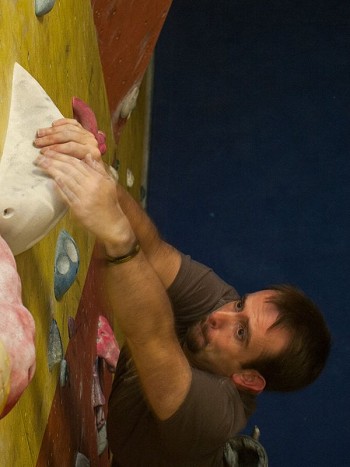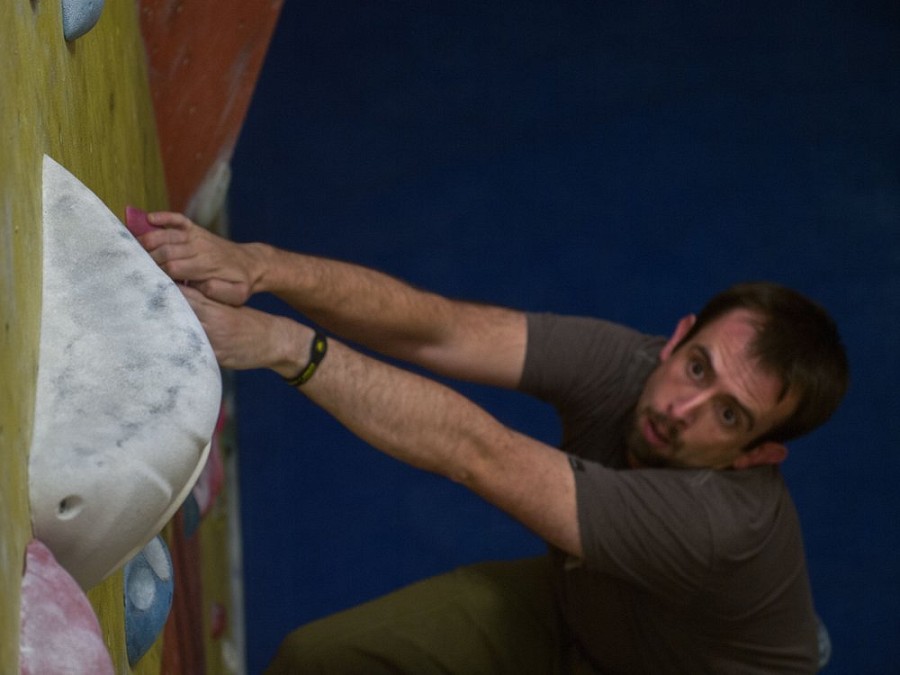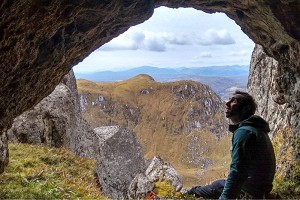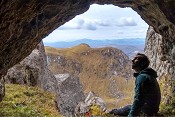
And today was to be no exception.
The guide I'd chosen was John Kettle, largely on the strength of an article he had written about movement skills (see UKC Article here) and some comments on his website from clients. I figured that if the weather went pear shaped (what? In the Lakes in September?) some coaching could be useful. One in particular had caught my eye; "Being coached by John is like being taught by Yoda". Cool. Anyone who knows me and has seen me climb knows that I have historically subscribed to the "Mr Tall School of Climbing". I have long arms and when I can attach these to a hold and pull I make upward progress. But balance, footwork and technique were less ingrained. A fact that the jamming scars on my hands from the previous week attested to.
It continued to scythe down as I drove north from Skipton. The car was packed with my trad gear but I'd looked at the skies earlier and chucked my wall kit in too. The message on my phone confirmed it, "Raining in Kendal, meet at the wall?". It seemed the only option. I turned the windscreen wipers up a notch.
When I'd learned to climb as a naïve 18-year-old student the extent of the instruction was how to tie on to the rope and put on a harness. When you got stuck and asked what to do next the usual reply was "climb up". 17 years, one accident and many adventures later and I had still never had any advice about how to move. Time to break the habit.
I met John in the café of Kendal wall. He was a compact, energetic looking bloke and soon we were talking about climbing and life in general before moving onto the plan for the day. First off, John asked me about my climbing history (warts and all) and what I was doing at present and finally what I wanted to do in future. Over about half an hour we looked at what my perceived needs and aspirations were and what to do to address them. We went through some psychological exercises and techniques to help me build confidence and get over previous bad experiences. My professional background is in mental health but John put a new slant on things and some new techniques that surprised me. In the past I have focused on negative events but this behaviour can reinforce the negative experience. I have since looked at certain types of climb that I really don't like and I can trace these back to specific incidents where things went badly. Using the techniques developed with John I can work on building a more positive psychological base.

We had a break fro some lunch and so I could take notes: the amount of new information and feeling of movement well need recording. Those notes now form an integral part of my training plan. It is hard describe, the result of the morning's exercises had altered a few habits but the main impression was actually a feeling, a sense of moving well with balance and momentum and little effort. If you want to understand it, you'll have to book John and work hard.
The next session was on the bouldering wall. We started with a remedial clinic for my jamming technique- a minor change in hand positioning and suddenly the jamming felt solid and restful not sketchy and hard. It came down to hand technique but more importantly, body position. We then concentrated on basic, single move exercises. Each exercise took a different starting position and highlighted means of using core muscles and legs to generate momentum and movement without using the arms. At times I would do the exercises with my eyes closed, just to concentrate on the feelings of the shift in my body weight and force in my feet. Again, I won't describe specifics, as this will be individual to anyone who tries it. But I will say that these techniques enabled powerful movements so easily that I had to concentrate on reducing the force I was applying to avoid overshooting the target hold. Precision and accuracy were added to the lexicon. And more notes over a tea break.
The final session was back in the main hall, practicing certain movements on a top rope to develop a rhythm using the new climbing techniques I was learning. We also talked about falling practice and clip drop techniques. I'd been climbing or thinking about it for 8 hours by the time we stopped. My arms felt fresh, my core muscles tired and my skin sore. My shoulders, usually my limiting factor physically, felt ok.
So has it worked? It's too early to say what effect it has had as I intend to practice the technique drills over the winter months until moving like this is second nature. However, a week later I was at my local wall. I found myself leading a slab route with ease that had previously spat me off on top rope, and tackling overhanging terrain with far less fatigue. I'm writing the following day with no sign of the shoulder pain that a long session usually sets up. The sense of moving well and lightly on my feet was there again, albeit with reminders to myself about bad habits. I'm sure that the hard work is just beginning, as it will take me many hours of practice to integrate these techniques and eliminate my bad habits. But I think the outcome will be very positive- an ability to climb harder moves with less effort and to remain climbing for longer as my shoulders won't wear out.
And all for the price of a rope and a day indoors. Well worth it.














Comments